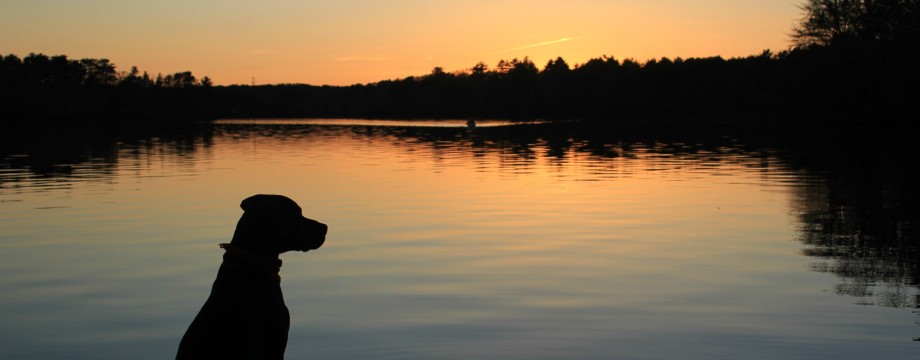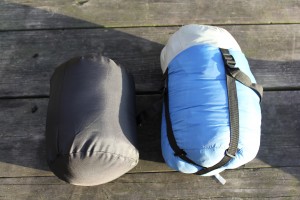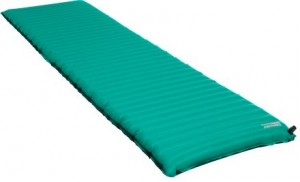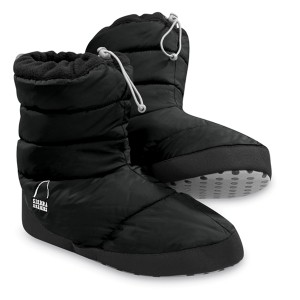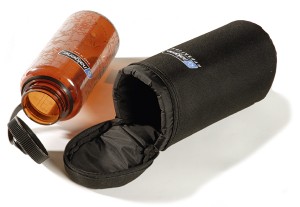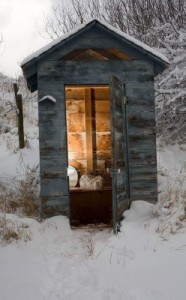I’ll always remember my first winter camping trip to Black Pond in the White Mountains of New Hampshire as an enlightening experience! The hike in to Black Pond is only about 3 miles but the snow and ice made it a 1.5 hour trip; a little too long to retreat back to the car alone in the night if things got too chilly! As the sun went down the temperatures quickly dropped below zero. I thought that toting along my brand new -20F sleeping bag made me well prepared for the night out. I was wrong!
Typically, I sleep like the dead regardless of where I choose to lay my head. Many of my college roommates will attest to the fact that it would take a force of nature to awake me from my slumber. Well, I may have just discovered that force of nature…the bitter cold of winter! That night at Black Pond was the most fitful nights of my life as I battled against the cold. Clearly, there was more to staying warm in a sleeping bag than I had anticipated…
Here are a few tips and tricks that will help to keep you warm in your sleeping bag during those early, late, and off-season kayak camping trips:
1) Choose the right sleeping bag for the job:
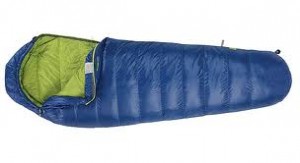
The Sierra Designs Zissou 12 is an example of a mummy-style, dridown-filled sleeping bag (Image Courtesy of Sierra Designs)
It all starts with choosing the right sleeping bag for the conditions. The three major factors to consider with choosing a sleeping bag are the style, fill material, and temperature rating. Mummy style bags are better for cold weather camping because they’re form fitting and therefore have less “empty space” to warm up. When it comes to fill materials it’s hard to beat the warmth of down for cold weather camping in dry environments. If you’re expecting temperatures to be hovering around freezing then a dry-down or synthetic-filled bag is a good choice because they handle moisture better than untreated down. Finally, choose a sleeping bag with a temperature rating lower than the expected nighttime temperature. Most sleeping bags are given a temperature rating that corresponds to lowest outside air temperature at which an average male will remain “comfortably warm.” Women and “cold sleepers” are typically comfortable at outside temperatures roughly 10 degrees F above the rated temperature.
2) Fluff your bag to increase loft:
Compression can be your sleeping bags’ worst enemy. When packing for your trip you’ll inevitably squeeze your sleeping bag down to “critical mass” in order to get it to fit into the tiny stuff sack. Doing so allows the sleeping bag to take up minimal space in your boat or pack but it also compresses the insulation. When you arrive at the campsite your sleeping bag will exit your pack looking like a “dehydrated” version of its once fluffy self. Take some time to fluff that thing up and restore some air to the compressed insulation. This simple step will help make your sleeping bag feel so much warmer!
3) Use a sleeping pad or two:
I really can’t say enough about how important the sleeping pad is to keeping you warm in your sleeping bag. When you lie down in your bag your body weight will compress much of the insulation in the bottom of the bag flat against the ground. Compressed insulation does next to nothing to keep you warm. Sleeping pads, however, provide a layer of insulation between you and the ground. All sleeping pads come with a “R” rating which helps to quantify the resistance of the pad to heat conduction. The higher the R number the better you can expect the pad to insulate you from the cold ground. Sometimes one sleeping pad is not enough to keep you warm. I’ve found that stacking my inflatable pad on top of a less expensive “egg crate-style” pad often does the trick. If you’re looking for a lighter solution check out one of the new “four season” pads such as the Therm-a-rest NeoAir All-season.
4) Wear your ‘jamies:
Being warm in your sleeping involves wearing the appropriate clothing to bed. Start with a dry moisture-wicking base layer, a fresh pair of wool socks on your feet, glove liners for your hands, and a wool hat on your head. If you’re a cold sleeper then consider wearing fleece pants and a sweater too. Also, bring along a pair of down booties to help keep your feet warm at night. This may seem like just another piece of unnecessary gear to carry but they’re lightweight and really help to make the night much more comfortable. Finally, try to think ahead to what you’ll be wearing the next day. Bring these cloths to bed with you to get them on “preheat” for the next day and help to further insulate you at night.
Click here for a review of the Sierra Designs down booties
5) Eat eat eat!!!
Remember that your body is the major source of heat in your sleeping bag. The sleeping bag itself is designed as an insulator to efficiently contain the heat that you generate. The heat that your body generates is the by-product of metabolism; the fire inside of you that needs to be fed. NEVER go to bed on an empty stomach when camping in the cold. Be sure to eat a high calorie dinner and then eat some more to ensure that you don’t “run out of fuel” during the night. Some of my friends like to bring a candy bar to bed with them in case they wake up in the night feeling cold. Eating the candy bar provides a quick boost of energy that helps them get back to sleep. This goes against my “no food in the tent” rule but I’m more willing to break from this doctrine in the winter especially if I’m camping in a place where the possibility of unwelcome animal visit is very low.
6) Sleep with a “warm” water bottle:
One of the biggest favors that you can do for yourself while is to take some fresh water to bed with you. This ensures that you have some unfrozen water to drink in the morning and the water can also help warm up your sleeping bag. Before you go to bed take time to secure fresh water by melting snow or otherwise heating up at least a liter (Nalgene bottle) of water on the stove. Place the bottle of warm water within an extra tube sock and take it to bed. The heat of the warm water bottle will dissipate and help to warm the sleeping bag. Throughout the course of the night your body heat will ensure that the water stays well above freezing so that you can wake up to a nice drink. It’s a win-win!
7) Once you’re in the bag stay in the bag:
Precious metabolic energy begins to warm your sleeping bag the moment that you crawl into it for the night. Leaving the sleeping bag once you’ve warmed it up for any reason is completely counter-productive! This means taking care of any bathroom business before you tuck yourself in at night. If you’re someone who is prone to waking up for a midnight pee then consider using the old “bottle trick” (sorry ladies) so that you don’t have to leave the bag in the night. Just be sure to distinguish the pee bottle from your warm water bottle somehow! Also, it’s a good idea to keep anything else that you might need during the night close by or in the bag with you. This includes your headlamp, extra clothing, and maybe a candy bar.
Stay warm out there!
-Kayak Dave


